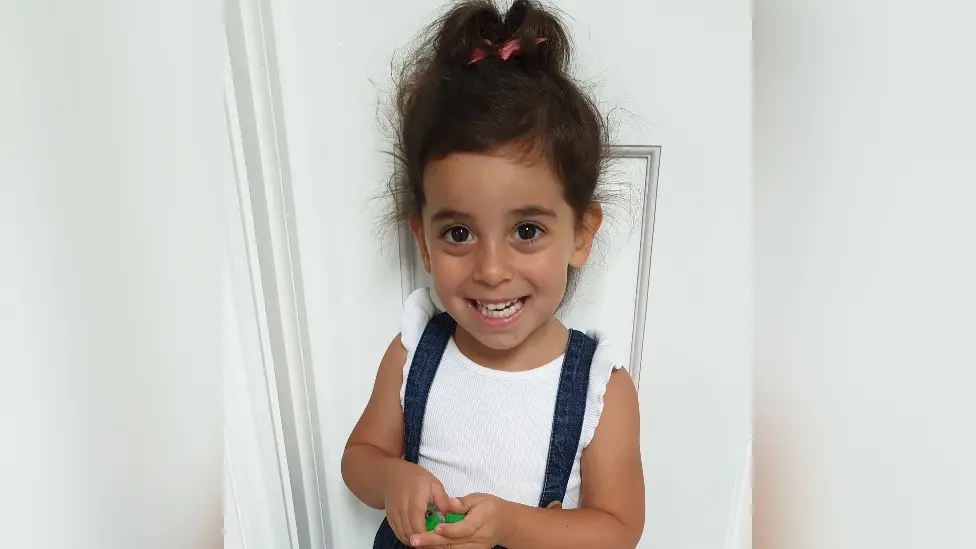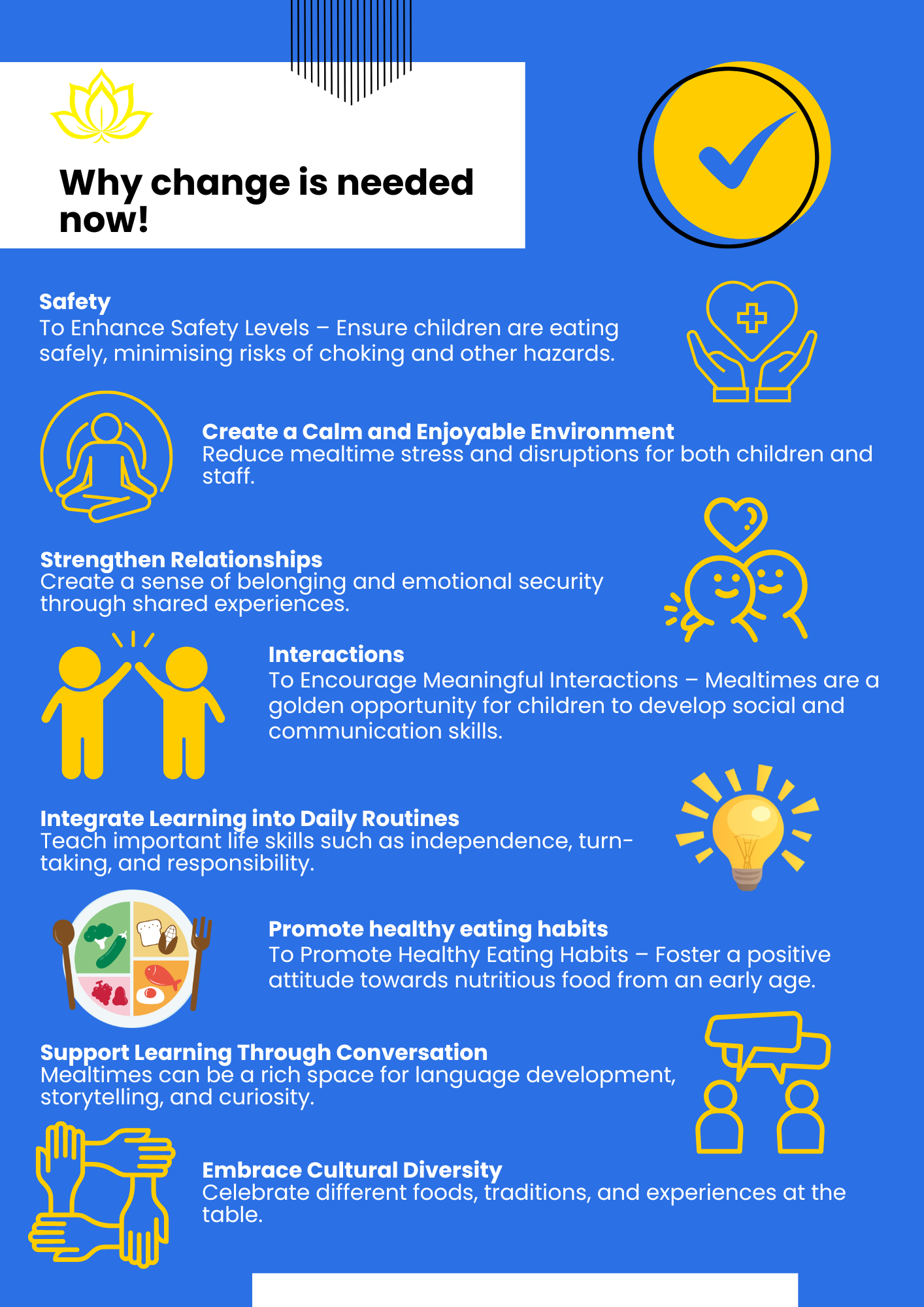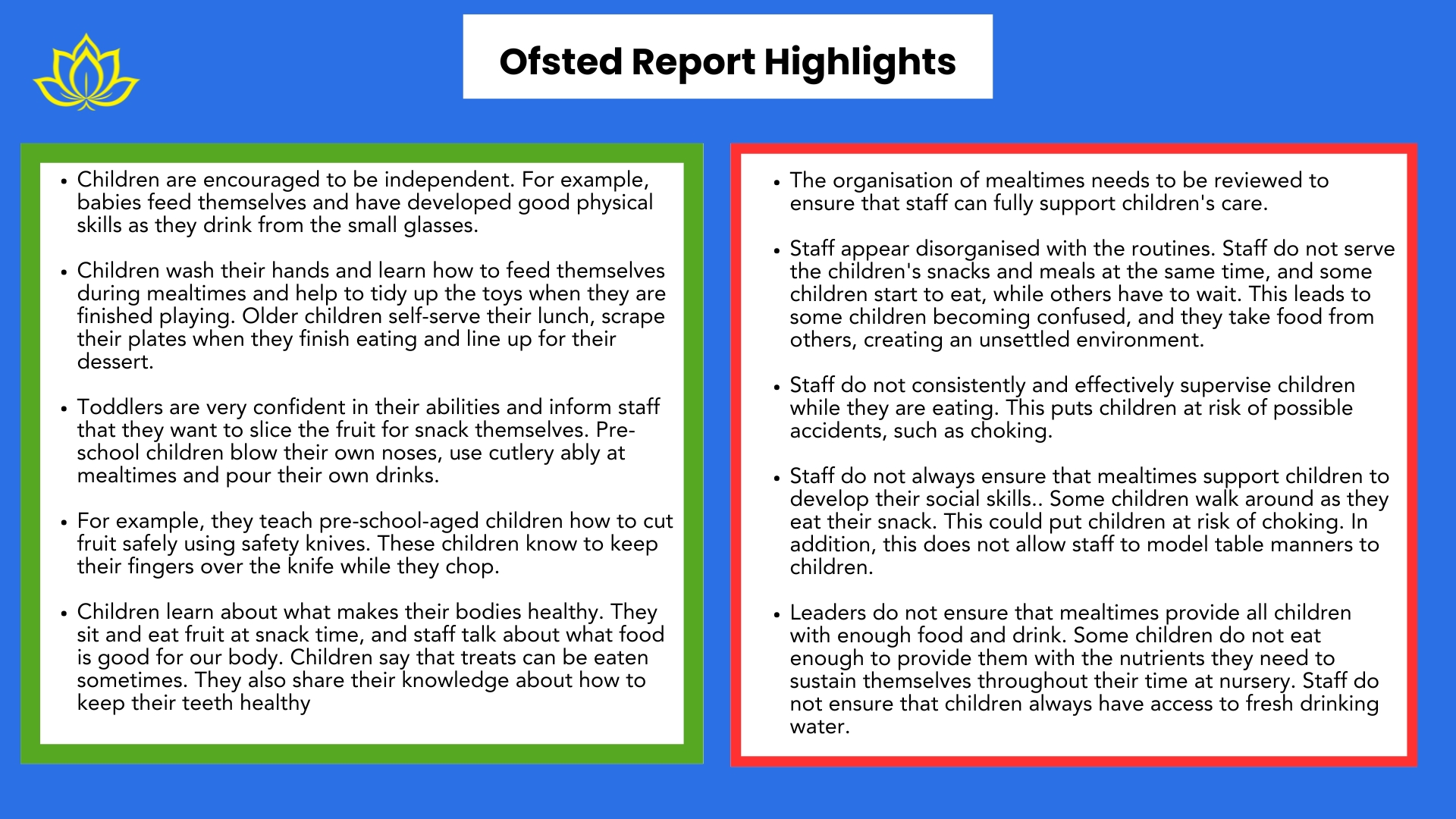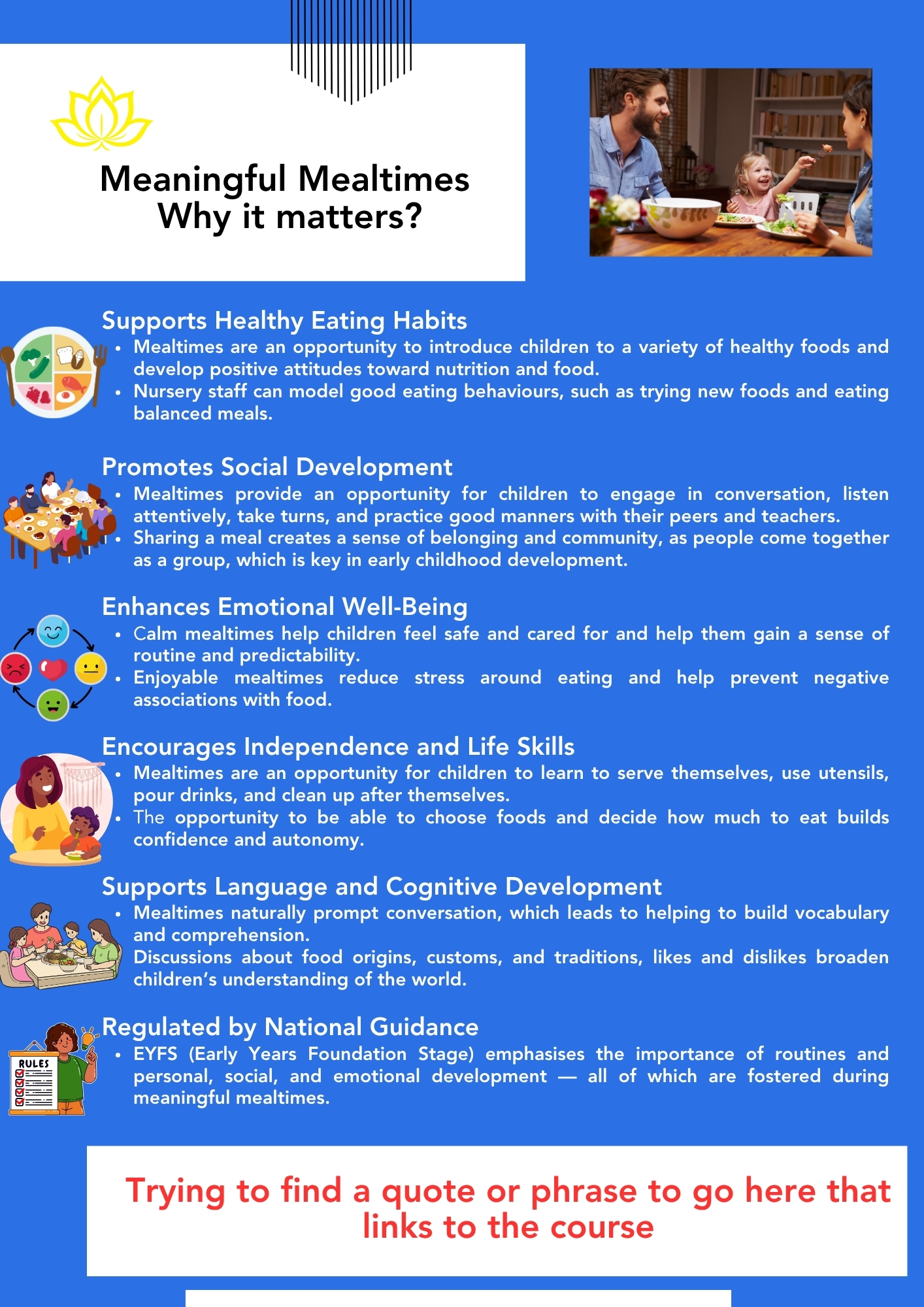A setting with meaningful mealtimes will…
- Have safe mealtimes where appropriate monitoring and support is offered promptly.
- Have mealtimes where children engage with one another and adults.
- Present more learning opportunities to children (and adults) during this time through curiosity and conversation.
- Lead to stronger reassuring relationships between children and their peers, and adults too.
- Ensure this part of the routine is enjoyable for children and adults, like mealtimes should be at home too.
A setting with sustainable practices will…
- Be adhering to latest government guidance.
- Promote a ‘green’ mindset in your setting community.
- Do your bit for a more sustainable future.
First, we dive deep into why being mindful of mealtime practices matters, which can lead to the ultimate tragedy as seen below.
Why does this matter?
This matters because when mealtimes are not safe, terrible (and avoidable) things can happen:
Click here to learn more about the Oliver Steeper story, a nine-month old who tragically died after choking on food at nursery.
Click here to learn more about the Sadie Salt story, a two-year old who also died through choking on her food at nursery.


Whilst stories around meaningful mealtimes are not always this tragic, it is essential to know what is at stake if mealtimes are not run safely. This content will help you to do this and also to ensure this part of the say is meaningful and development for all. Let’s start with some self-reflection to give yourself a clear picture of current practices you are aware of.
Task One – Reflect and Assess
Take some time to observe the set up around mealtimes at your setting, take pictures and make observations. Consider following one child as each part of the routine including both pre and post eating. What do you notice? What do you learn from looking at the routine through the child’s eyes? Share this with you colleagues to see what they think too.
A Case Study
Case Study: Challenges in Promoting Healthy Eating in a Pack-Away Nursery Setting
A nursery faced significant challenges in embedding healthy eating practices within their setting. This coincided with a renewed Ofsted focus on healthy eating alongside the recent new leadership and management team.The nursery operated as a pack-away setting, where children brought in packed lunches from home. Staff enthusiasm was low, and parental and staff engagement around healthy eating was minimal. As a result, mealtimes were inconsistent and did not align with recommended health guidance.
Observations of Packed Lunches Included:
- A large grab bag of crisps
- A sausage roll or doughnut from a local bakery
- Cold fast food leftovers
- A combination of crisps, biscuits, and a chocolate bar
- An overfilled lunchbox packed with multiple snack items to “ensure the child would eat something”
In addition to the poor nutritional content of many lunches, staff behaviours further undermined efforts to promote healthy habits:
- Staff were observed drinking fizzy and energy drinks from cans during the day and joking about them in front of the children
- Snacking on chocolate and soft drinks took place in front of the children, often outside of designated mealtimes
Lunchtime Routines and Supervision:
- Children used their own water bottles or sippy cups from home, but younger children often could not access them independently throughout the day.
- In some cases, children were seen drinking from the first available cup, which raised alarm bells
- The lunchtime environment was disorganised, with children frequently demanding help to open packaging or locate items. This was alongside some children going home for lunch and other children arriving
- Once finished, children would leave the table independently; only some were encouraged to tidy up or return lunchboxes, and expectations were inconsistent across the staff team
Leadership acknowledged these concerns and began working on a whole-setting improvement plan, including updating food policies, providing staff training, and engaging parents through workshops and visual aids to promote healthy choices.
What Was Implemented
To address these issues, a comprehensive set of changes was introduced by the new management team:
Structured Seating and Supervision
- More tables were added, creating a calmer, less crowded environment.
- Each table had a dedicated staff member, ensuring adult presence and consistent support during meals.
- Staff were expected to sit and eat (following the healthy eating guidelines too) alongside children, supporting conversation, manners, and routine.
Clear Lunchbox Guidance for Parents
- Guidance was provided to parents outlining appropriate lunchbox contents, using visuals and real examples that reflected the cultures of the children attending the nursery.
- Staff also followed the same healthy eating expectations, modelling positive choices to both children and families.
- A transition period followed, where some children continued to bring unhealthy food. Through consistent conversations with both children and parents, this gradually improved – though the change was not immediate.
Mealtime Routines and Social Interaction
- A new routine was introduced: children now collect their lunchboxes and wait for their friends and teacher before starting.
- Lunchtimes became a social experience. Staff facilitated discussions about food, likes and dislikes, and what the adults were eating encouraging openness around trying new things and understanding food choices.
Promoting Independence
- Children were encouraged to open their own lunchboxes and food packaging with support, encouragement and role modelling where needed.
- This helped foster independence, fine motor skills, and a sense of ownership around eating.
Introduction of a Water Station
- A self-serve water station was set up with plastic jugs and cups. Children were taught how to pour water, drink from a cup, and return used items to the appropriate area.
- Over time, the setting transitioned to glass jugs and cups, with each table having its own set during meals.
- Eventually, the use of individual water bottles and sippy cups was phased out, promoting uniformity, hygiene, and independence
The impact
The changes implemented have had a transformative effect on mealtimes across the nursery. What was once a chaotic and rushed part of the day has become a valued opportunity for learning, social development, and community.
- Mealtimes are now seen as a meaningful event, rather than something to simply “get through.” The atmosphere is calmer, more purposeful, and enjoyable for both staff and children.
- Children now use plates to transfer food from their lunchboxes, reinforcing table manners and hygiene practices. This small change has helped create a sense of occasion and structure.
- Children take part in setting the table, which has supported their numeracy skills (e.g., counting plates, cups, cutlery) and understanding of the world (e.g., roles, responsibilities, care for others).
- Conversations during mealtimes are rich and spontaneous, with children talking confidently with peers and adults. Teachers act as guides and role models, fostering respectful communication and curiosity about each other’s food, routines, and cultures.
Children are eating more and sitting at the table for longer periods. There is a noticeable reduction in comments such as “hurry up” or “you need to eat that.” Mealtimes are no longer dominated by pressure or time constraints, but instead framed as social and developmental opportunities.
Why might change be needed now?

“Adults and children should be invited to join a cheerful and flavourful table. It’s one of the possible ways to ensure that a healthy, balanced diet becomes widespread habit.” Alessandra Fabbri (2008)
There’s no better place for a conversation than around a delicious meal, and there’s also no doubt that conversation is a brain-booster for young children.
What do Ofsted say?

Reflect and change
Take a moment to reflect on your current practices with these scenarios, consider making your own to consider with your team too:
Why does it matter?

The children have had their say too, here are some key points from our children, how can you reflect on and change your practices to bring these out in your setting too?

Things to focus on
Here are 3 areas you might want to start with…
Part 1 – Following the review you did for task one, create an action plan in 3 – 2 – 1…
- 3 things that can implement this week.
- 2 things that can implement this month.
- 1 bigger thing you would like to implement this term.
For example…
3 things to implement this week (Small, immediate steps):
- Introduce a “waste-watcher” role – a child or staff member records leftover food at each meal to raise awareness.
- Model and encourage conversation at the table – adults sit and eat with children, asking open questions to spark mealtime talk.
- Reduce single-use packaging at snack time – switch to reusable bowls/plates where possible.
2 things to implement this month (Medium steps that need a little more planning):
- Menu feedback wall – create a child-friendly board where children can place stickers or drawings to show foods they enjoyed. This links to pupil voice and mealtime meaning.
- Family recipe share – invite parents to share one favourite healthy, cultural, or sustainable meal idea. Trial one on the menu.
1 bigger thing to implement this term: (Longer-term, bigger shift):
- Sustainable Mealtimes Project – children and staff co-create a mini climate action plan for mealtimes (aligned with the gov.uk sustainability leadership guidance). This might include reducing food waste by 25%, introducing more plant-based meals, or working with suppliers to source more local produce.
Part 2 – Enhance the conversation, try these conversation starters with your children…
- Food & Healthy Eating 🍎
- “What’s your favourite fruit or vegetable? What does it taste like?” – Encourages descriptive language and healthy food choices.
- “Where do you think this food comes from? Does it grow on a tree, in the ground, or somewhere else?” – Builds awareness of food origins and nature.
- Sustainability & Caring for Our Planet 🌍
- “What do you think happens to food when we throw it away?” – Introduces the idea of food waste and its impact.
- “How do you think we can help take care of our planet while eating?” – Encourages children to think about recycling, composting, and reducing waste.
- “Can you name a food that grows in our country? What about a food that comes from far away?” – Promotes understanding of local vs. imported food.
- Culture & Diversity 🌎
- “Have you ever tried a food from another country? What did it taste like?” – Encourages cultural awareness and open-mindedness.
- “Some people use chopsticks, fingers, or spoons to eat. How do you like to eat your food?” – Helps children learn about different eating traditions.
- Mealtime Manners & Social Skills 🏡
- “What’s something kind you can do for a friend during mealtime?” – Reinforces kindness, sharing, and good table manners.
- “Why do we say ‘thank you’ when someone makes us food?” – Encourages gratitude and appreciation.
- Exploring Senses & Fun with Food 🎨
- “Can you describe the crunchiest, softest, or most colourful food on your plate?” – Develops sensory awareness and vocabulary.
Part 3 – Sustainability
Having conversations around sustainability is a crucial starting point to get all team members onboard with sustainability practices. Try this with your team this week…
- Reducing Food Waste & Sustainable Practices
- 🗣 How much food do we throw away each day, and what steps can we take to reduce waste?”
- 💡 Follow-up: Can we introduce composting, smaller portion sizes, or a “try a little” approach for new foods?
- Sourcing & Serving Sustainable Food
- 🗣 “Where do we get our food from, and are there ways to source more local, seasonal, or organic produce?”
- 💡 Follow-up: Could we partner with local farms, grow our own herbs/vegetables, or explore more plant-based options?
- Teaching Sustainability Through Mealtimes
- 🗣“How can we use mealtimes to teach children about looking after our planet?”
- 💡 Follow-up: Can we start conversations about recycling, encourage reusable containers, or talk about the journey of food from farm to fork?
Did you know?
Mealtimes in education are not only about nutrition and social connection — they are also a powerful opportunity to act on sustainability. The Department for Education now asks all schools and settings to develop climate action plans and show leadership in sustainability. This means thinking carefully about where our food comes from, how it is served, and what happens to any waste. By embedding sustainable choices into our mealtime routines, we can reduce our impact on the planet, model responsible behaviours for children, and connect everyday practices with a bigger purpose. Linking mealtimes to sustainability ensures that what happens around the table supports both wellbeing today and a healthier environment for the future.
3-2-1 Sustainability Action Plan for Nurseries
Linked to the DfE Climate Action Plan Pillars
3 things to implement this week (Small, visible first steps):
- Food waste awareness – weigh or visually record leftovers at mealtimes to create a simple baseline.
- Pillar: Leadership & Governance (data collection for monitoring)
- Switch to reusables where possible – ensure cups, cutlery, and plates are not single-use; reduce disposable wipes at the table.
- Pillar: Estates (operations and resource management)
- Conversation starters with children – short chats about “where our food comes from” to link mealtimes with the wider world.
- Pillar: Curriculum (embedding sustainability learning through daily routines)
2 things to implement this month (Medium steps that need coordination):
- Menu review with sustainability in mind – add at least one locally sourced or seasonal food option each week.
- Pillar: Estates (procurement, supply chain choices)
- Staff knowledge boost – run a short team discussion/training on the DfE climate action guidance so all staff are aligned.
- Pillar: Leadership & Governance (staff engagement, policy awareness)
1 bigger thing to implement this term (Longer-term shift that demonstrates leadership):
- Nursery Climate Action Plan – Mealtimes Chapter – create a simple section in your nursery’s overall sustainability plan dedicated to food and mealtimes (waste reduction targets, sourcing policies, family engagement). Share it with parents and include in staff induction.
- Pillars: Leadership & Governance, Curriculum, Community (strategic planning, embedding in children’s experience, engaging families)
Try the GIST – good ideas for starting things…
- Take one picture of your mealtime set up today, reflect on it with another staff member and or the children to see what they like and what could be improved.
- Follow the experiences of one child at mealtime, how long are they waiting, what do they do and how can this be enhanced?
- Thinking about space, can room be created for the adults to sit at the table with the children? Why might this be beneficial in multiple ways?
Want to learn more?
- Read all about Safer Eating coming into effect September 2025 – see the consultation details on page 27 of this document.
- Check out this Guidance on Safe Eating form Kent Safeguarding Children Agency.
- Read the Government Guidance in full here and supportive materials they offer.
